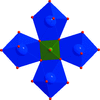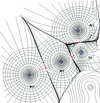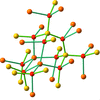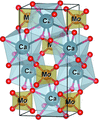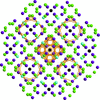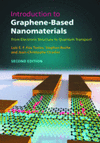issue contents
October 2020 issue

Cover illustration: Electrostatic potential mapped on a 0.03 Å-3 electron density isosurface of [Mn(CO)4{(C6H5)2P-S-C(Br2)-P(C6H5)2}]Br calculated using relativistic model ZORA-BLYP-D3(BJ)/TZP//ZORA-M06-2X/QZ4P, see Van der Maelen et al. [(2020). Acta Cryst. B76, 802-814].
scientific commentaries
Free 

Moghzi et al. [Acta Cryst. (2020), B76, 779–788] use the metalloligand approach to form a crystalline 3D metal–organic material with remarkable iodine sorption capacity.
Free 

By cleverly combining concepts and tools from different disciplines and by making use of the X-ray derived electron density, the balance of quantum and electrostatic local forces acting on electrons in stable crystals can now be analysed. This is illustrated for diamond and the NaCl crystal, in terms of a topological analysis of the scalar potentials associated to these forces.
research papers
Download citation


Download citation


The high-pressure/high-temperature phase Sr5CuGe9O24 was solved by low-dose electron diffraction tomography and refined against powder X-ray diffraction data. The Ge ions in this compound have three different coordination numbers.
CCDC reference: 2013451
Download citation


Download citation


The crystal structures of DMSO trihydrate and DMSO dihydrate have been determined, and a second metastable dihydrate has also been identified. The transformations between these phases, as well as their partial melting, allow us to interpret conclusively studies of the binary DMSO–water phase diagram that have been reported in the literature.
This paper reports first-principles density functional theory calculations to predict the crystal growth morphology and equilibrium shape of GdVO4 crystal. The Bravais–Friedel–Donnay–Harker method, the attachment energy method and the surface energy method, in the frame of a 2D periodic slab model, were used.
The complex cation distribution in ZnAl2O4 upon Fe addition is probed, influencing defect annihilation and generation accompanied by modification of optical and magnetic properties.
Download citation


Download citation


The spatial distribution of electrostatic and quantum electronic forces in stable crystals is studied using the experimental electron density and their structure-forming properties are revealed.
CCDC reference: 2014342
Download citation


Download citation


Crystal engineering techniques have been used successfully to design and synthesize four 0D to 3D praseodymium(III) metal–organic compounds. The results confirm the remarkable potential of one of the compounds for the reversible adsorption of iodine vapour (about 490 mg g−1).
Download citation


Download citation


Three new polymorphs of K3GaF6 are observed at different temperatures.
Download citation


Download citation


Open  access
access
 access
accessThe zinc aspartate complex, commonly used as a dietary supplement, crystallizes as either the dihydrate or the sesquihydrate. High pressure favours the sesquihydrate, and this has been rationalized by measurements of the compressibility using single-crystal X-ray diffraction up to 4 GPa.
Download citation


Download citation


The topology of the C—Br⋯Br dihalogen bond present in the title complex, as well as that of several noncovalent intramolecular C—H⋯Br—C interactions, have been studied from the point of view of the QTAIM and ELF methodologies applied to an X-ray constrained wavefunction.
CCDC reference: 2006886
Download citation


Download citation


Open  access
access
 access
accessA molecular container with C60 cargo was crystallized and studied by X-ray diffraction revealing a complicated disorder of the ligand caused by the incompatibility with its site symmetry. The tumbling of the C60 cargo was studied by solid-state NMR which suggested possible phase transitions, positively verified at high temperature by DSC.
CCDC reference: 1987205
Download citation


Download citation


Open  access
access
 access
accessTwo L-amino-acid-based NiII complexes are reported; while the L-tyrosine derivative is a symmetrical μ3-carbonate-bridged self-assembled trinuclear NiII complex whose formation involves CO2 uptake, the L-phenylalanine analog is a mononuclear system which does not exhibit the same behaviour.
Download citation


Download citation


Single crystals of Tl4.86Fe0.82Hf1.18(MoO4)6 were obtained by the self-flux method from high-temperature solutions in the Tl2MoO4–Fe2(MoO4)3–Hf(MoO4)2 system. The crystal structure consists of nonpolar and polar domains with different local symmetries and can be described as a whole by the nonstandard space group R1 with local symmetry R c for some atoms.
c for some atoms.
CCDC reference: 2021227
Download citation


Download citation


A synthetically modified GFPc analogue, 3,4,5-trimethoxybenzylidene imidazolinone, yielded five polymorphs concomitantly solely due to the interplay of iso-energetic weak intermolecular interactions in molecular associations. The different fluorescence emissions of Form I (blue) and Forms II to V (yellow) were attributed to the differences in π-stacking interactions.
The structure of Ag16B4O10 is re-interpreted according to the extended Zintl–Klemm concept. The [B4O10]8− anions (isostructural to P4O10) are reformulated as Ψ-N4O10, making sense of its similarity to P4O10. The excess of 8 e−, previously located at Ag4 voids, should be distributed through Ag—O interactions.
Open  access
access
 access
accessThe MTEX procedure for electron backscatter diffraction data treatment allows automated detection of cyclic twins with coplanar and alternating morphology in sintered cassiterite-based ceramics.
Download citation


Download citation


In this work, a new ruthenium-oxo compound is discovered and the crystal structure and magnetic properties are examined.
CCDC reference: 1999097
Download citation


Download citation


Mechanochemical grinding led to the formation of five new cocrystals of linezolid. The analysis of their crystal structures revealed a variety of supramolecular synthons, with no clear preferences towards the formation of particular intermolecular interactions.
Download citation


Download citation


K3–xNa1+xM4(MoO4)6 (M = Ni, Mg, Co) and K3+xLi1–xMg4(MoO4)6 are isostructural with the sodium-ion conductor II-Na3Fe2(AsO4)3 and yurmarinite, Na7(Fe3+, Mg, Cu)4(AsO4)6, and have 3D frameworks of MoO4 tetrahedra and tetramers of MO6 octahedra with disordered K(Na) in cavities. Electrical conductivity of the triple molybdates (about 10−6 S cm−1 at 390°C) is more than two orders of magnitude lower compared with II-Na3Fe2(AsO4)3.
Structural and optical properties of Er2O3-doped CaMoO4 nanoparticles used as UV detectors are presented.
Download citation


Download citation


Imidazolium hypodiphosphates (C3H5N2)(H3P2O6) (I) and (C3H5N2)2(H2P2O6) (II) are characterized using differential scanning calorimetry, thermogravimetric analysis, single-crystal and powder X-ray diffraction. Structural analysis supported by dielectric spectroscopy of (I) indicates the freezing of motion of imidazolium cations as being the driving force of the phase transitions: orthorhombic HTP (Pnna) → incommensurately modulated RTP → monoclinic LTP (P21/n11).
B-IncStrDB reference: 16472EnKoLb
Crystal structures of both α- and β-Mn modifications have been presented as packing of tetrahedral helices extracted from four-dimensional {3, 3, 5} polytope construction.
book reviews
Free 



 journal menu
journal menu



















